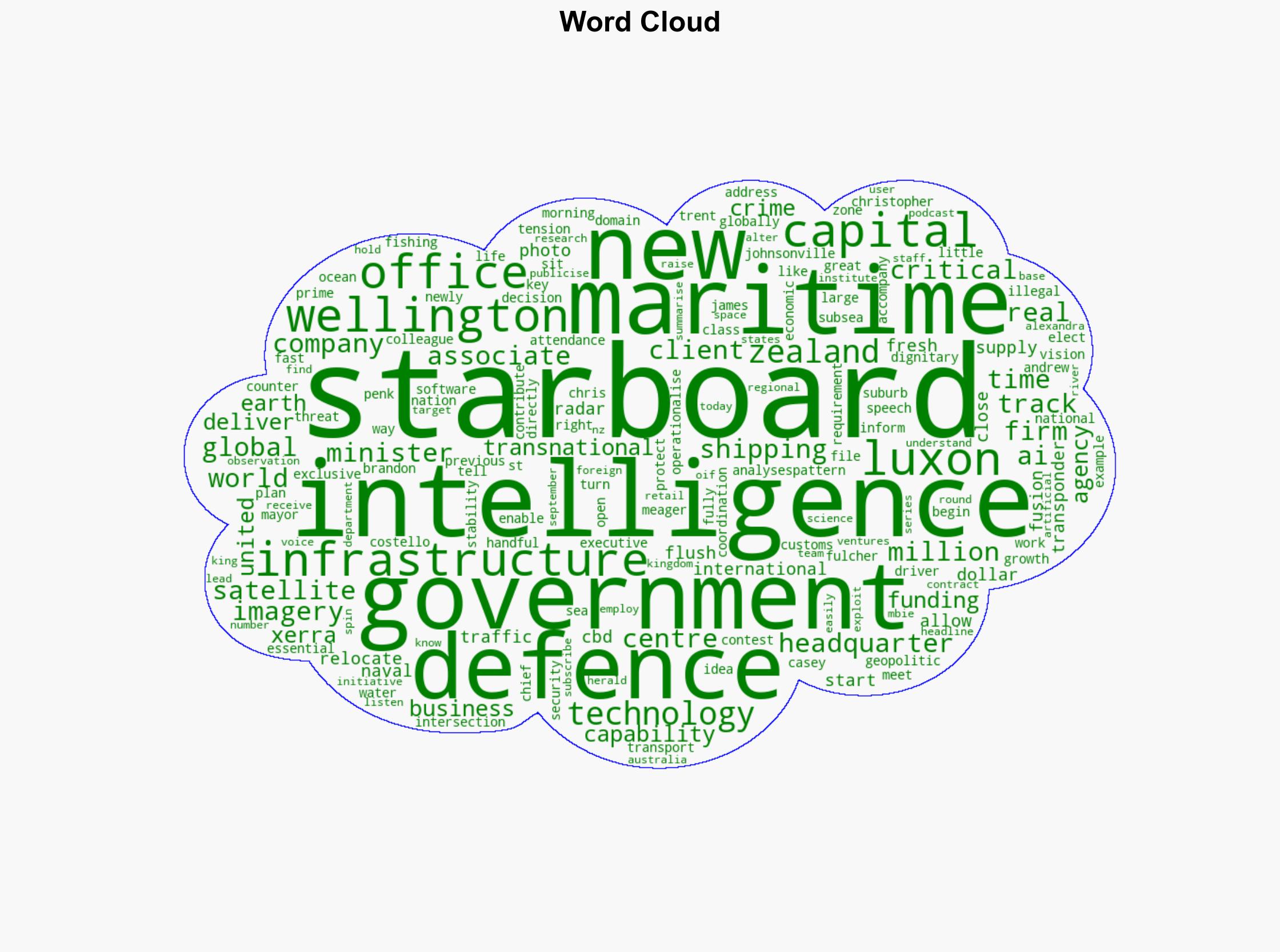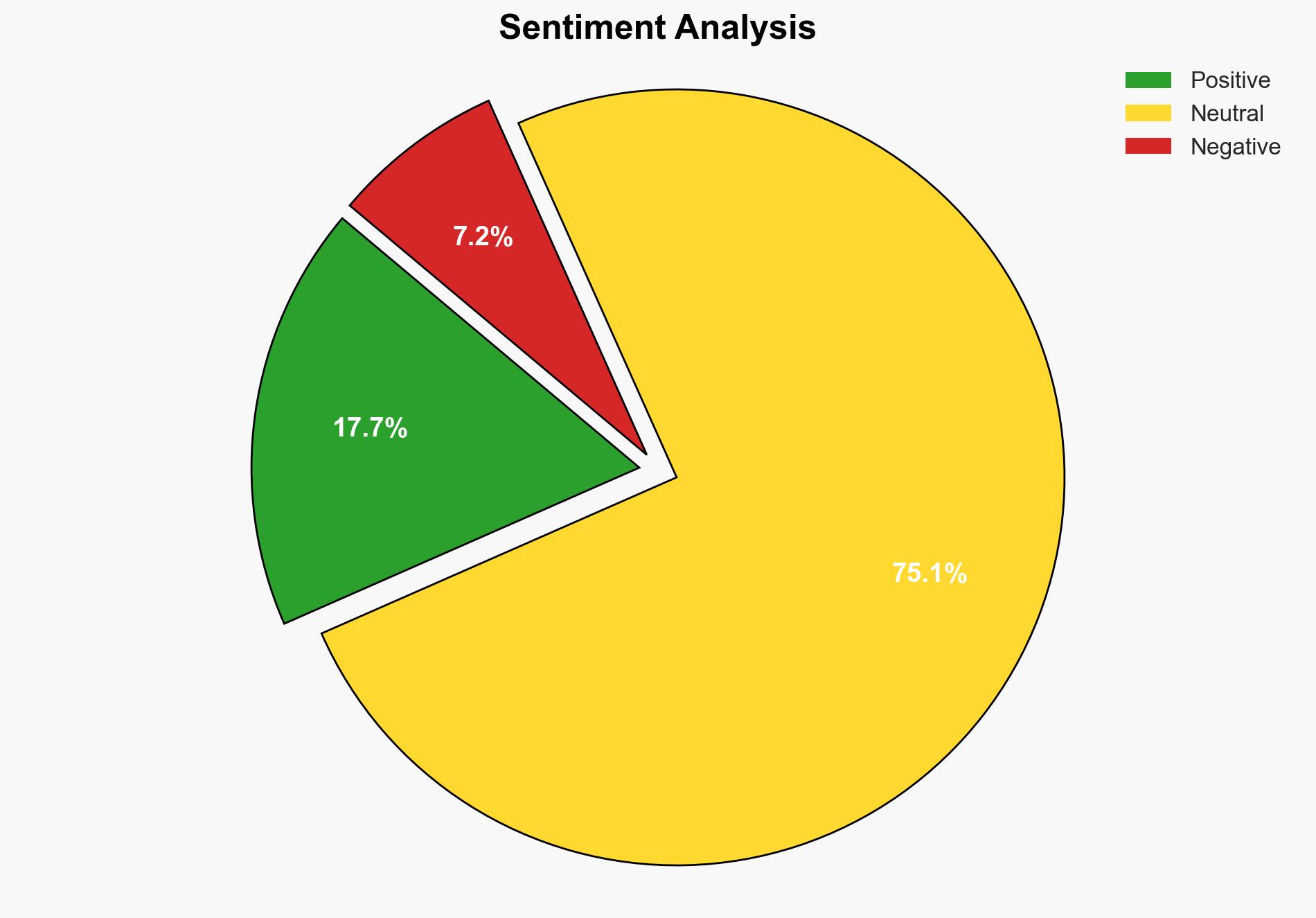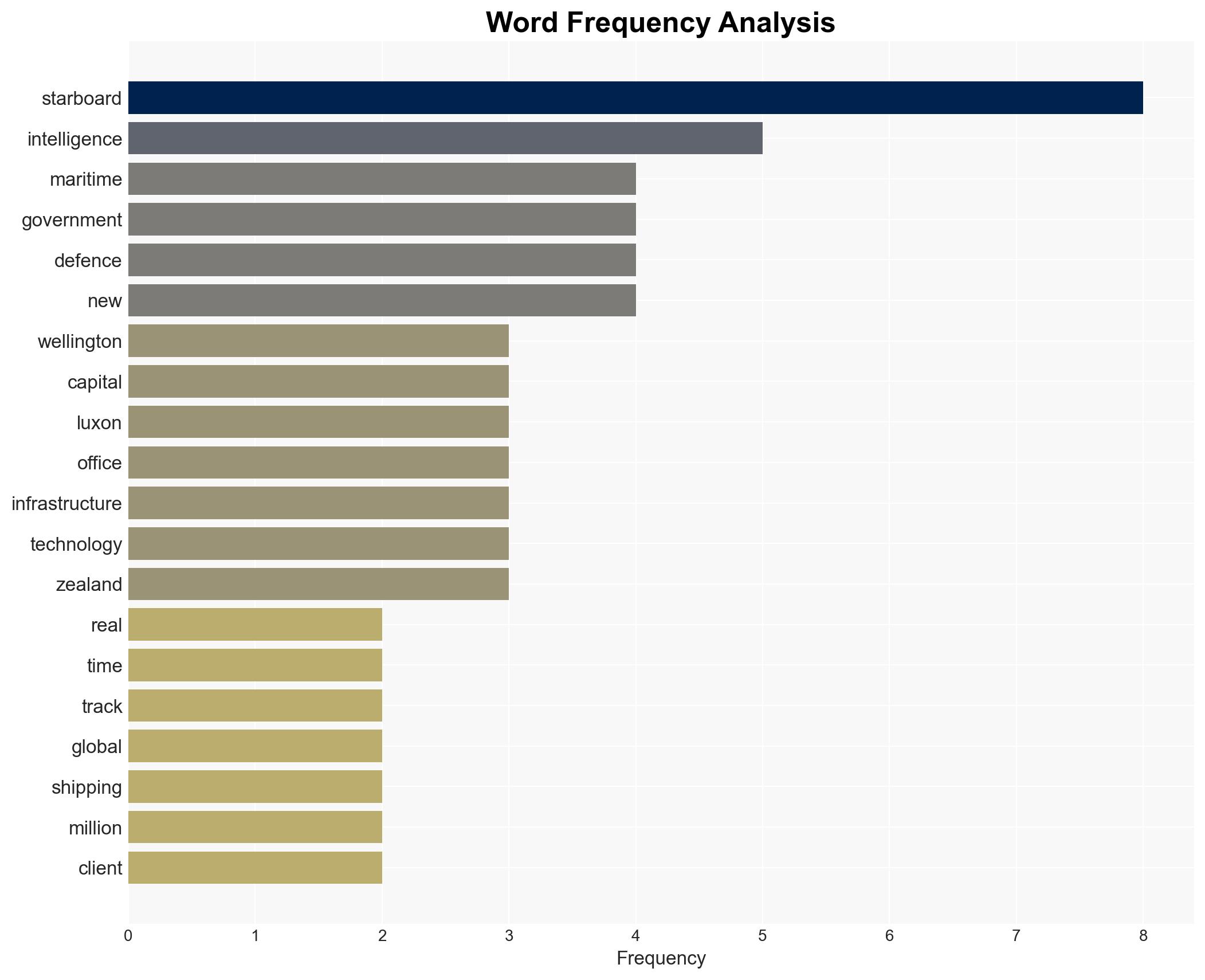Naval surveillance start-up moves closer to capital clientele – New Zealand Herald
Published on: 2025-11-13
AI-powered OSINT brief from verified open sources. Automated NLP signal extraction with human verification. See our Methodology and Why WorldWideWatchers.
Intelligence Report: Naval surveillance start-up moves closer to capital clientele – New Zealand Herald
1. BLUF (Bottom Line Up Front)
The strategic judgment is that Starboard Maritime Intelligence’s relocation and expansion efforts are primarily aimed at strengthening its position within New Zealand’s defense and government sectors. This move is likely driven by increasing geopolitical tensions and the need for enhanced maritime surveillance capabilities. The most supported hypothesis is that Starboard is positioning itself to become a key player in national security and maritime intelligence, with a moderate to high confidence level. Recommended action includes monitoring Starboard’s partnerships and technological developments to assess potential impacts on regional security dynamics.
2. Competing Hypotheses
Hypothesis 1: Starboard Maritime Intelligence’s relocation to Wellington is primarily a strategic move to secure government and defense contracts, leveraging its advanced maritime surveillance technology to meet increasing national security demands.
Hypothesis 2: The relocation is primarily driven by commercial interests, aiming to expand its market presence and attract additional private sector clients by capitalizing on its proximity to government and defense entities.
Hypothesis 1 is more likely due to the presence of high-level government officials at the opening, indicating strong governmental interest and potential collaboration. Additionally, the emphasis on national security and geopolitical tensions as growth drivers supports this hypothesis.
3. Key Assumptions and Red Flags
Assumptions include the belief that government interest equates to potential contracts and that Starboard’s technology is sufficiently advanced to meet defense requirements. A red flag is the lack of explicit confirmation of contracts with government agencies, which could indicate overstatement of governmental interest. There is also a risk of confirmation bias in interpreting government presence as a direct endorsement.
4. Implications and Strategic Risks
The expansion of Starboard could lead to increased surveillance capabilities, potentially escalating regional maritime tensions if perceived as a threat by neighboring countries. There is also a risk of cyber threats targeting Starboard’s technology, which could compromise sensitive data. Economically, successful integration into government contracts could bolster New Zealand’s defense industry, but failure could lead to financial instability for Starboard.
5. Recommendations and Outlook
- Monitor Starboard’s contractual developments with government entities to assess the impact on national security.
- Encourage collaboration between Starboard and regional partners to mitigate potential geopolitical tensions.
- Best scenario: Starboard secures significant government contracts, enhancing New Zealand’s maritime security capabilities.
- Worst scenario: Starboard’s technology fails to meet defense standards, leading to financial losses and reputational damage.
- Most-likely scenario: Starboard successfully integrates into the defense sector, contributing to national security while expanding its market presence.
6. Key Individuals and Entities
Christopher Luxon, Trent Fulcher, Chris Penk, Casey Costello, James Meager, Andrew Little.
7. Thematic Tags
National Security Threats
Structured Analytic Techniques Applied
- Cognitive Bias Stress Test: Expose and correct potential biases in assessments through red-teaming and structured challenge.
- Bayesian Scenario Modeling: Use probabilistic forecasting for conflict trajectories or escalation likelihood.
- Network Influence Mapping: Map relationships between state and non-state actors for impact estimation.
Explore more:
National Security Threats Briefs ·
Daily Summary ·
Methodology





